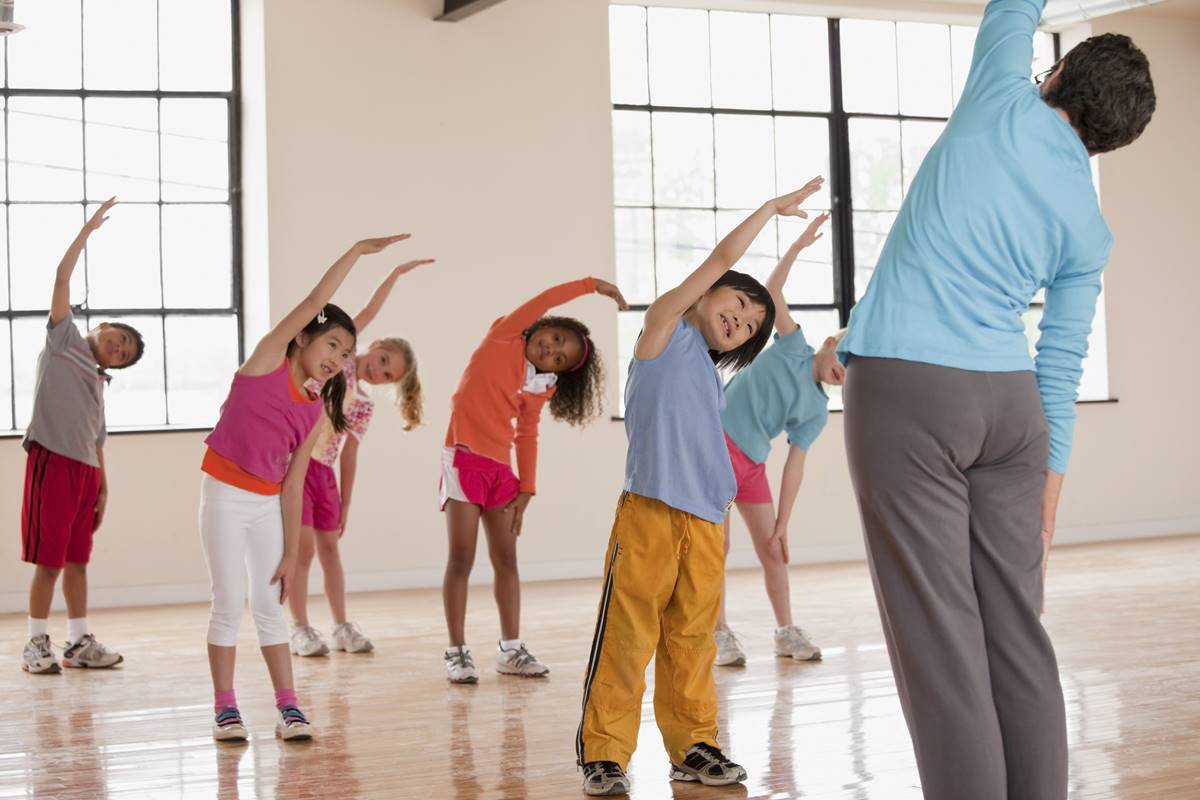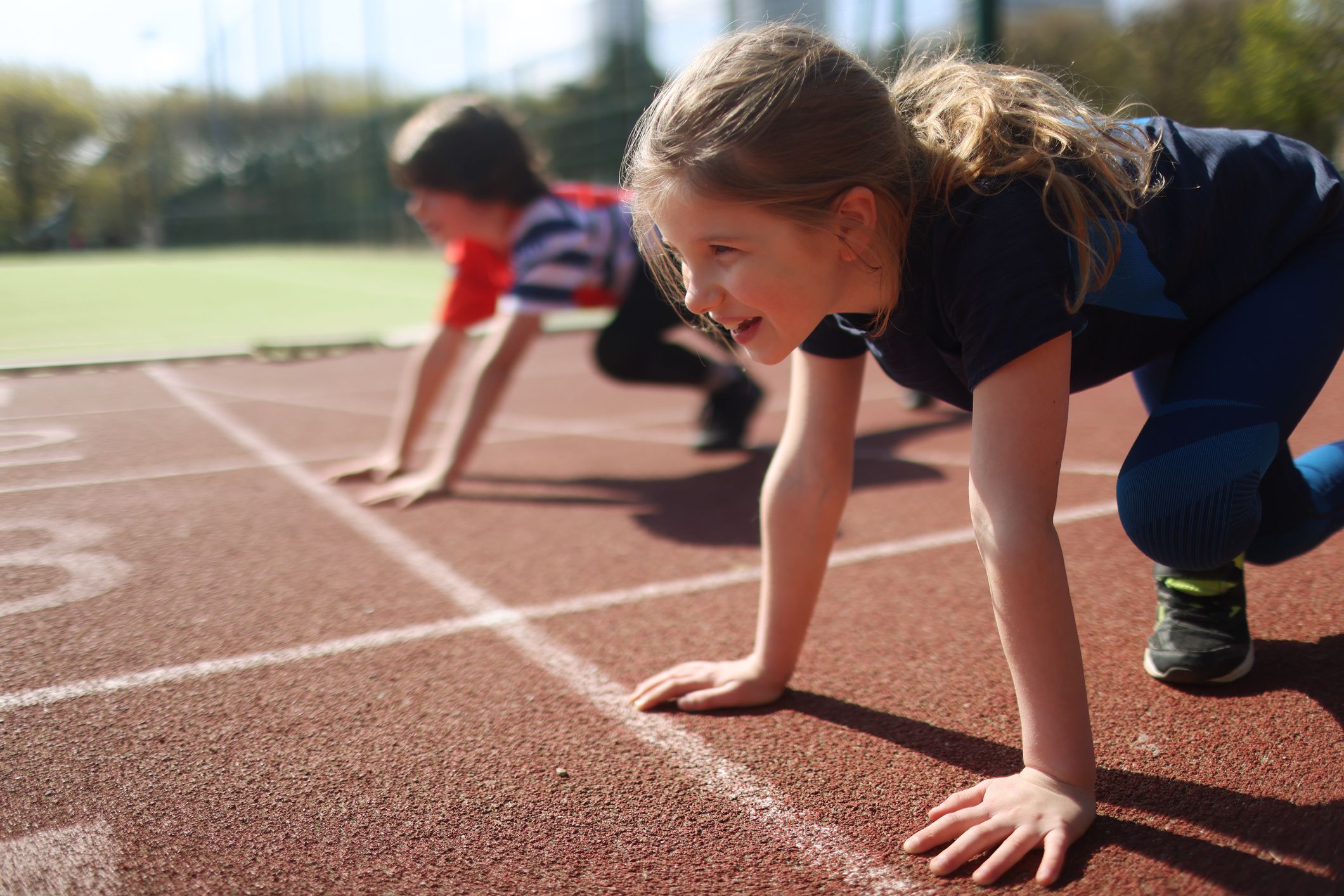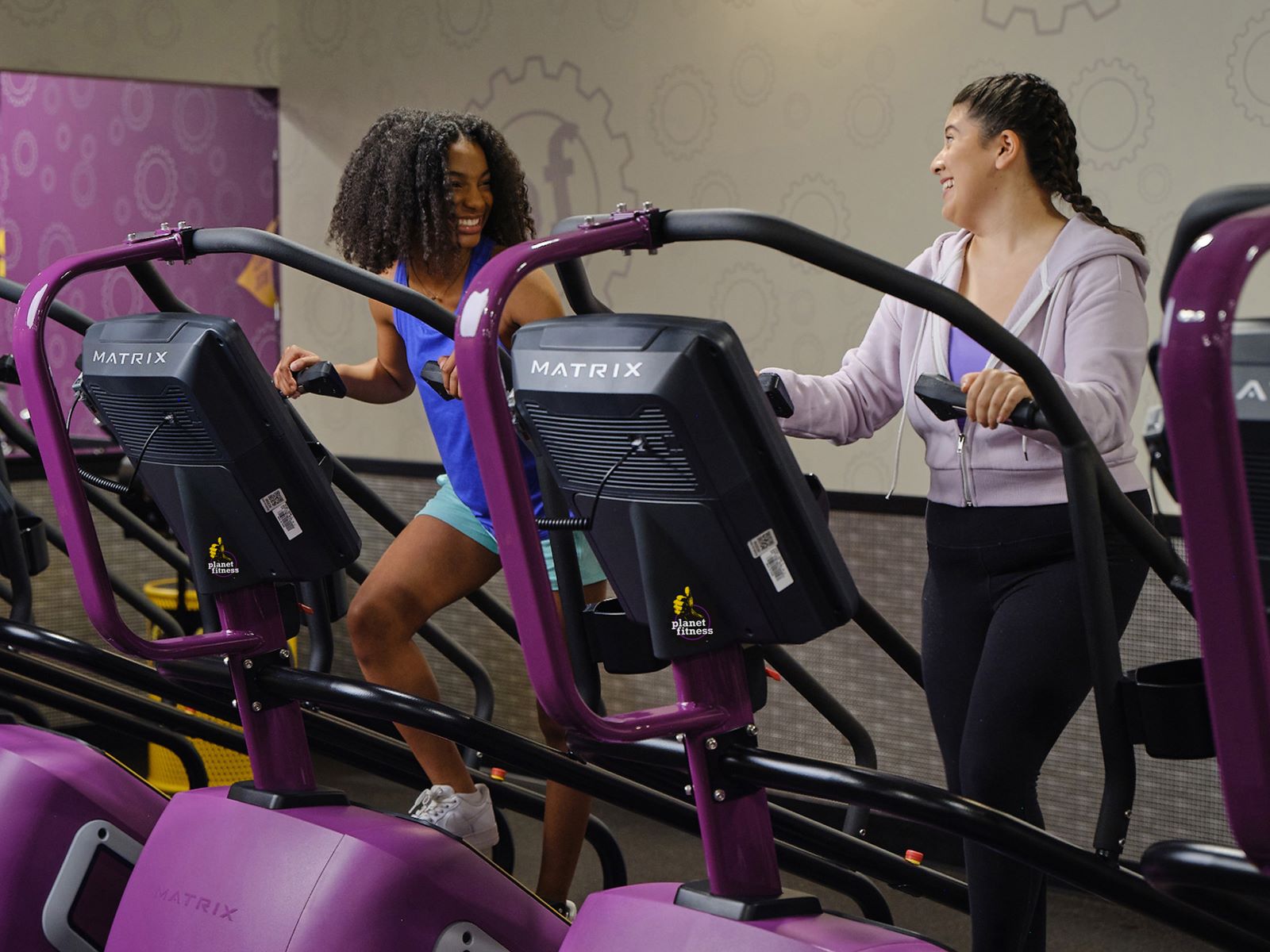Home>Misc>Featured>What Should Be The Focus Of Exercise For Children Under 12 Years Of Age?


Featured
What Should Be The Focus Of Exercise For Children Under 12 Years Of Age?
Published: October 8, 2023
Learn what should be the focus of exercise for children under 12 years of age. Discover the featured tips to ensure their physical development and overall health.
Introduction
Exercise plays a vital role in promoting the overall health and well-being of children. It not only helps them maintain a healthy weight, but also contributes to the development of strong muscles and bones, improves cardiovascular fitness, enhances motor skills, boosts self-esteem, and provides a great opportunity for social interaction. With the proliferation of screens and sedentary activities, it has become increasingly important to prioritize physical activity for children under 12 years of age.
In this article, we will explore the various aspects of exercise that should be the focus for children under 12 years old. We will delve into the recommended daily exercise guidelines, the different types of physical activities suitable for this age group, and the benefits of each type of exercise. Additionally, we will discuss the importance of warm-up and cool-down routines, common mistakes to avoid while exercising with children, and safety precautions to keep in mind.
By understanding the significance of exercise for young children and having the knowledge of how to optimize their exercise routines, parents and caregivers can ensure that children develop healthy habits early on, leading to a lifetime of physical fitness and well-being.
Importance of Exercise for Children
Regular exercise is crucial for the overall growth and development of children. Engaging in physical activities not only helps them stay fit but also has numerous benefits for their physical, mental, and emotional well-being. Here are some key reasons why exercise is important for children:
- Physical Health: Exercise helps children maintain a healthy weight, build strong muscles and bones, and develop good cardiovascular fitness. It reduces the risk of obesity, type 2 diabetes, and other chronic diseases later in life.
- Mental Health: Physical activity stimulates the brain and releases endorphins, which are natural mood boosters. Regular exercise promotes better focus, concentration, and cognitive function, leading to improved academic performance.
- Motor Skills Development: Physical activities like running, jumping, and climbing help children develop gross motor skills. Fine motor skills also improve through activities that require coordination and precision, such as playing sports or musical instruments.
- Social Interaction: Participating in team sports and group activities encourages children to interact with their peers, fostering teamwork, cooperation, and communication skills. It also provides opportunities for making friends and building social connections.
- Self-esteem and Confidence: Accomplishments and improvements in physical activities contribute to a child’s self-esteem and confidence. They learn to set goals, overcome challenges, and develop a positive self-image, which carries over into other aspects of life.
It is important to instill the habit of regular exercise from an early age. By doing so, children establish healthy habits that can be carried into adulthood, reducing the risk of sedentary lifestyles and associated health issues. Additionally, exercise serves as a healthy outlet for stress and energy, promoting better sleep patterns and overall emotional well-being.
Recommended Daily Exercise Guidelines for Children Under 12 Years of Age
When it comes to exercise, children have unique needs and capabilities. It is important to provide them with age-appropriate activities to ensure their safety and enjoyment. The following are the recommended daily exercise guidelines for children under 12 years old:
- Ages 6-12: Children in this age group should aim for at least 60 minutes of moderate to vigorous physical activity every day. This can be achieved through a combination of structured activities, such as sports or dance classes, and unstructured playtime outdoors.
- Ages 3-5: Preschool-aged children should engage in at least 3 hours of active play throughout the day. This can include running, jumping, climbing, and playing games that involve physical movement. It is important to incorporate activities that promote balance, coordination, and flexibility.
- Ages 1-2: Toddlers should be encouraged to be active throughout the day in a variety of ways. This can include free play, exploring their environment, and engaging in activities that promote gross motor skills development, such as crawling, walking, and playing with age-appropriate toys.
It is important to note that these guidelines are general recommendations, and it is essential to consider a child’s individual abilities, interests, and health conditions. Some children may require modifications or adaptations to suit their needs.
Parents and caregivers should aim to make physical activity a fun and enjoyable experience for children. Incorporating a variety of activities, such as sports, dance, outdoor play, and active games, can help keep children engaged and motivated. It is also important to limit sedentary screen time, such as watching TV or playing video games, to ensure children have ample opportunities for physical activity.
Remember, consistency is key. Encouraging regular exercise from an early age helps children establish healthy habits that they can carry into adulthood, promoting a lifelong commitment to physical fitness and well-being.
Physical Activities Suitable for Children Under 12 Years
Children under 12 years of age have abundant energy and a natural inclination to move and play. Engaging them in a variety of physical activities is essential for their growth and development. Here are some suitable activities for children in this age group:
- Sports: Team sports, such as soccer, basketball, baseball, or swimming, are excellent options for children. They promote physical fitness, teamwork, coordination, and discipline. Sports provide opportunities for children to learn valuable life skills, such as sportsmanship and perseverance.
- Dance and Aerobics: Dancing or participating in aerobic activities, like Zumba or aerobics classes, can be a fun and energetic way for children to stay active. These activities improve cardiovascular fitness, coordination, rhythm, and flexibility.
- Outdoor Play: Encouraging children to engage in unstructured playtime outdoors is vital. Activities like running, jumping, climbing, riding bikes, or playing on playgrounds help children develop motor skills, balance, and spatial awareness. They also allow children to connect with nature and develop a sense of adventure.
- Gymnastics and Martial Arts: Gymnastics and martial arts classes offer a structured environment for children to enhance their strength, flexibility, balance, and coordination. These activities also instill discipline, focus, and self-confidence.
- Yoga and Stretching: Introducing children to yoga and stretching exercises can be a great way to improve flexibility, body awareness, and relaxation. Children can benefit from learning techniques to manage stress and improve their overall well-being.
- Active Games: Engaging children in active games, such as tag, relay races, obstacle courses, or scavenger hunts, not only promotes physical activity but also enhances social interaction and teamwork. These games can be played indoors or outdoors, making them versatile options for any setting.
It is important to choose activities that align with a child’s interests and abilities. Allowing children to explore and try different activities can help them discover their passions and develop a lifelong love for physical activity. Remember to provide a supportive and encouraging environment that focuses on participation and fun rather than competition.
By engaging children in a variety of physical activities, parents and caregivers can help them develop essential motor skills, improve fitness levels, maintain a healthy weight, and promote overall well-being.
Benefits of Aerobic Exercises for Children
Aerobic exercises, also known as cardiovascular exercises, are activities that increase the heart rate and breathing rate over an extended period. These exercises provide numerous benefits for children’s physical and mental well-being. Here are some key benefits of incorporating aerobic exercises into children’s routines:
- Improved Heart and Lung Health: Regular aerobic exercise strengthens the heart muscle and improves lung function. It enhances the capacity of the cardiovascular system to deliver oxygen to the body’s tissues and removes waste products more efficiently.
- Increased Stamina and Endurance: Engaging in aerobic activities helps children build stamina and endurance. This allows them to engage in physical activities for longer durations without tiring easily. It contributes to increased energy levels and overall fitness.
- Healthy Weight Management: Aerobic exercises burn calories, which can help children maintain a healthy weight and reduce the risk of obesity. These activities also contribute to the development of lean muscle mass, which boosts metabolism and promotes a healthy body composition.
- Enhanced Cognitive Function: Aerobic exercises have been shown to improve cognitive function, including attention, memory, and learning abilities. Regular aerobic activity increases blood flow to the brain, promoting the growth of new brain cells and improving overall brain health.
- Mood Enhancement: Aerobic exercises stimulate the release of endorphins, which are natural mood boosters. This can lead to improved mood, reduced stress and anxiety levels, and increased feelings of happiness and well-being in children.
- Better Sleep Patterns: Engaging in regular aerobic exercise has been linked to improved sleep quality and duration in children. It helps regulate the sleep-wake cycle and promotes more restful sleep, leading to better overall health and daytime functioning.
It is important to note that aerobic exercises can take various forms and can be adapted to suit a child’s interests and abilities. Activities like brisk walking, running, swimming, cycling, dancing, or participating in organized sports all provide excellent opportunities for aerobic exercise.
Parents and caregivers should encourage children to engage in aerobic activities for at least 60 minutes per day, as recommended by the daily exercise guidelines. Making these activities enjoyable and incorporating them into a child’s daily routine will help establish a lifelong habit of regular aerobic exercise, promoting optimal health and well-being.
Benefits of Strength Training Exercises for Children
Strength training exercises, also known as resistance training, involve using weights, resistance bands, or bodyweight to build and develop muscle strength. While some may think that strength training is only meant for adults, it can actually offer numerous benefits for children as well. Here are some key benefits of incorporating strength training exercises into children’s routines:
- Increased Muscle Strength and Endurance: Strength training exercises help children develop stronger muscles. This can improve their overall physical performance and resilience in various activities, such as sports, playing, and daily tasks.
- Bone Health and Development: Strength training exercises contribute to the development and maintenance of healthy bones in children. The controlled stress placed on the bones during these exercises helps stimulate bone growth, which is crucial for preventing osteoporosis later in life.
- Improved Body Composition: Strength training helps children build lean muscle mass while reducing body fat. This can lead to a healthier body composition, increased metabolism, and improved weight management.
- Enhanced Physical Performance: Stronger muscles and improved muscular endurance gained from strength training exercises enable children to perform better in various physical activities. It enhances their agility, speed, power, and overall physical capabilities.
- Boosted Self-confidence and Self-esteem: Accomplishing strength training exercises and witnessing their own progress can boost children’s self-confidence and self-esteem. They learn to set goals, overcome challenges, and establish a sense of accomplishment.
- Improved Posture and Stability: Strength training exercises target specific muscles, including those responsible for maintaining good posture and stability. Proper form and technique during strength training can help children develop a better posture, reducing the risk of musculoskeletal issues.
It is important to note that strength training exercises for children should be appropriately supervised, age-appropriate, and utilize proper equipment or bodyweight resistance. It is recommended that children use light weights or resistance bands and focus on proper form and technique rather than heavy lifting.
Parents and caregivers should consult with qualified professionals, such as pediatricians or fitness trainers experienced in working with children, to design safe and effective strength training programs. Children should start with simple, compound exercises that target major muscle groups, gradually increasing the difficulty and intensity over time.
By incorporating strength training exercises into a child’s routine, parents and caregivers can help them build strong muscles, improve body composition, enhance physical performance, and develop a positive body image. It is essential to emphasize safety, proper technique, and age-appropriate exercises to ensure a beneficial and enjoyable experience for children.
Benefits of Flexibility Exercises for Children
Flexibility exercises, also known as stretching exercises, are an important component of physical fitness for children. These exercises involve various movements that stretch and lengthen the muscles, tendons, and ligaments. While often overlooked, flexibility exercises offer numerous benefits for children’s overall health and well-being. Here are some key benefits of incorporating flexibility exercises into children’s routines:
- Improved Range of Motion: Flexibility exercises help children improve their range of motion in joints, allowing them to move freely and perform everyday activities with ease. It enhances their flexibility, mobility, and posture, reducing the risk of musculoskeletal imbalances and injuries.
- Enhanced Muscle Coordination: Stretching exercises promote better coordination between muscles and joints. This improves body awareness and control, allowing children to move more precisely and efficiently, enhancing their athletic performance and overall physical capabilities.
- Injury Prevention: Regular flexibility exercises increase muscle and joint flexibility, reducing the risk of strains, sprains, and other common sports and recreational injuries. By improving the body’s ability to handle sudden movements and impacts, children are better equipped to protect themselves during physical activities.
- Promotion of Relaxation and Stress Relief: Flexibility exercises, particularly those involving deep breathing and mindful movements, can help children relax, release tension, and alleviate stress. These exercises promote relaxation responses in the body, leading to a sense of calmness and improved mental well-being.
- Support for Active Growth and Development: Flexibility exercises support healthy growth and development in children. They help prevent muscle tightness and imbalances that can restrict movement and hinder proper skeletal growth. Flexibility exercises also support optimal posture and alignment during the growth spurts in childhood.
- Improved Body Awareness and Mind-Body Connection: Flexibility exercises require children to focus on their bodies and develop a strong mind-body connection. This cultivates body awareness, mindfulness, and a better understanding of how their bodies move and function, leading to a greater appreciation for overall health and well-being.
When incorporating flexibility exercises into a child’s routine, it is essential to warm up the muscles before stretching and to perform stretches in a controlled and gentle manner. It is important to avoid bouncing or overstretching, as this can lead to injuries. Children should hold each stretch for 15-30 seconds and repeat the exercise 2-4 times.
Parents and caregivers should encourage children to stretch all major muscle groups, including the legs, arms, back, and neck. Incorporating activities like yoga or Pilates can be an enjoyable way to incorporate flexibility exercises into a child’s routine.
By including flexibility exercises in a child’s physical activity plan, parents and caregivers can help children develop greater body awareness, improve range of motion, prevent injuries, and promote overall flexibility and well-being.
Importance of Proper Warm-up and Cool-down Routines
Proper warm-up and cool-down routines are essential components of any exercise or physical activity for children. They prepare the body for the demands of exercise and help the body recover afterward. Here are some key reasons why incorporating warm-up and cool-down routines is important:
Warm-up:
- Injury Prevention: A thorough warm-up prepares the muscles, joints, and cardiovascular system for exercise. It increases blood flow to the muscles, which enhances oxygen and nutrient delivery, making the muscles more pliable and less prone to injuries.
- Increased Flexibility and Range of Motion: Warm-up exercises involve dynamic movements and stretching, which help improve flexibility and increase the range of motion of the joints. This allows the body to move more efficiently and reduces the risk of strains or sprains.
- Improved Performance: A proper warm-up routine helps prepare the body for optimal performance by gradually increasing heart rate and body temperature. This results in improved speed, power, agility, and coordination during physical activities.
- Mental Preparation: The warm-up phase allows children to mentally prepare for the upcoming exercise or activity. It helps focus their attention, increase motivation, and enhance concentration, improving overall performance and enjoyment of the activity.
Cool-down:
- Reduced Muscle Soreness: Cooling down after exercise helps remove lactic acid and metabolic waste products that accumulate during physical activity. This helps reduce muscle soreness and stiffness, enhancing post-workout recovery.
- Promotion of Circulation: Engaging in gentle cardiovascular exercise during the cool-down phase helps gradually lower heart rate and regulate blood flow. This aids in the removal of waste products from muscles and promotes efficient nutrient delivery for optimal recovery.
- Relaxation and Mindfulness: Cool-down routines often incorporate stretching and breathing exercises, providing an opportunity for relaxation and mindfulness. This can help children wind down, reduce stress levels, and promote a sense of calmness and well-being.
- Injury Prevention: Cooling down allows the body to gradually transition from exercise to rest. This prevents blood pooling in the muscles and sudden drops in blood pressure, reducing the risk of dizziness or fainting after intense physical activity.
It is important to allocate sufficient time for both warm-up and cool-down routines before and after each exercise session. For warm-up, aim for at least 5-10 minutes of low-intensity cardiovascular exercise, followed by dynamic stretches that target the major muscle groups. Cooling down should involve 5-10 minutes of gentle cardiovascular activity, such as walking or light jogging, followed by static stretches to promote flexibility and relaxation.
By incorporating proper warm-up and cool-down routines into children’s exercise regimens, parents and caregivers can help prevent injuries, improve performance, enhance recovery, and promote a positive and enjoyable exercise experience.
Common Mistakes to Avoid While Exercising with Children
Exercising with children is a wonderful way to promote physical fitness, bond as a family, and instill healthy habits. However, it is important to be mindful of certain mistakes that are commonly made while exercising with children. By avoiding these mistakes, parents and caregivers can ensure the safety and enjoyment of the exercise experience. Here are some common mistakes to avoid when exercising with children:
- Pushing Too Hard: It is crucial to remember that children have different capabilities and energy levels compared to adults. Pushing them too hard or expecting them to perform at adult levels can result in physical and emotional strain. It is important to choose exercises that are age-appropriate and gradually increase the intensity and difficulty as children progress.
- Neglecting Proper Form: Teaching children proper form and technique during exercises is essential for their safety and effectiveness. Without proper form, children may be at a higher risk of injuries and may not fully benefit from the exercise. Take the time to demonstrate and explain the correct way to perform each exercise, and supervise them closely to ensure they maintain good form.
- Overemphasizing Competition: While friendly competition can be a fun motivator, it is important to strike a balance and not overemphasize winning or outperforming others. Exercise should be a positive and enjoyable experience for children, focusing on participation, skill development, and personal improvement. Encourage a supportive and inclusive environment where children can cheer each other on and celebrate their individual achievements.
- Skipping Warm-up and Cool-down: Skipping warm-up and cool-down routines can increase the risk of injuries and hinder recovery. Make sure to allocate sufficient time for warm-up exercises to prepare the body for the upcoming activity and cool-down exercises to gradually bring the body back to its resting state. This will help maximize the benefits of the exercise and minimize post-workout discomfort.
- Ignorance of Safety Guidelines: It is important to be aware of safety guidelines and precautions specific to the type of activity children are participating in. This includes ensuring the use of appropriate safety gear, providing adequate supervision, and choosing environments that are safe and suitable for the activity. Understanding and implementing safety measures will help mitigate the risk of accidents and injuries.
- Focusing Solely on Exercise: While exercise is an important component, it is crucial to remember that children also require time for play, rest, and other activities that contribute to their overall development. Avoid overloading children with too many structured exercise sessions, and allow ample time for unstructured play, creativity, and relaxation.
By being mindful of these common mistakes, parents and caregivers can create an enjoyable and safe exercise environment for children. It is essential to prioritize their well-being, provide proper guidance, and foster a positive mindset towards physical activity.
Safety Precautions for Children During Exercise
Ensuring the safety of children during exercise is of utmost importance. While physical activity has numerous benefits, it is crucial to take necessary precautions to minimize the risk of injuries and create a safe environment. Here are some essential safety precautions to follow when children are engaging in exercise:
- Proper Supervision: Children should always be supervised by a responsible adult during exercise. This includes monitoring their activities, ensuring they follow proper safety guidelines, and being readily available to provide assistance or intervene if necessary.
- Appropriate Safety Gear: Depending on the type of exercise, children may need specific safety gear, such as helmets, knee pads, or mouthguards. It is important to ensure they wear the appropriate gear correctly to protect vulnerable areas during physical activities, such as biking, skateboarding, or contact sports.
- Warm-up and Cool-down: As mentioned earlier, warm-up and cool-down routines are essential for injury prevention and proper muscle recovery. Guide children through these routines and emphasize the importance of stretching and gradually increasing or decreasing intensity to reduce the risk of strains or other injuries.
- Proper Technique and Form: Teach children the proper technique and form for each exercise, focusing on maintaining good posture and alignment. Correct any improper form and provide guidance and support to ensure they perform exercises safely and effectively.
- Hydration: Encourage children to drink water before, during, and after exercise to stay hydrated. Proper hydration is crucial for maintaining optimal physical performance, regulating body temperature, and preventing heat-related issues.
- Environmental Safety: Consider the safety of the exercise environment. Ensure that the area is free from hazards, such as loose equipment, uneven surfaces, or tripping hazards. When exercising outdoors, pay attention to weather conditions and adjust activities accordingly to ensure the well-being of children.
- Individual Considerations: Take into account the individual needs and abilities of each child. Be aware of any medical conditions, limitations, or previous injuries that may affect their participation in certain activities. Adapt exercises as necessary and consult with medical professionals if needed.
- Encouraging Rest and Recovery: Rest and recovery are crucial for allowing the body to repair and rebuild after exercise. Ensure children have adequate rest days and avoid excessive or repetitive training that can lead to overuse injuries.
By implementing these safety precautions, parents and caregivers can create a secure environment for children to engage in exercise. It is important to promote a positive and safe exercise experience, focusing on the well-being and enjoyment of children.
Conclusion
Exercise is vital for the physical, mental, and emotional well-being of children under 12 years of age. By understanding the importance of exercise and focusing on appropriate activities, parents and caregivers can help children develop healthy habits that can last a lifetime. Incorporating aerobic exercises improves cardiovascular fitness, strength training exercises build muscle strength and endurance, flexibility exercises enhance range of motion, and proper warm-up and cool-down routines promote safety and maximize the benefits of exercise.
When exercising with children, it is important to avoid common mistakes such as pushing too hard, neglecting proper form, overemphasizing competition, skipping warm-up and cool-down routines, ignoring safety guidelines, and solely focusing on exercise. By being mindful of these mistakes, parents and caregivers can create a safe and enjoyable exercise environment for children.
Furthermore, implementing safety precautions such as proper supervision, appropriate safety gear, warm-up and cool-down routines, emphasizing proper technique and form, ensuring hydration, considering environmental safety, individual considerations, and promoting rest and recovery are essential in minimizing the risk of injuries and creating a safe exercise environment for children.
By prioritizing exercise and incorporating these guidelines into children’s routines, parents and caregivers are setting the foundation for a lifetime of physical fitness, health, and overall well-being. Remember, exercise should be fun, engaging, and age-appropriate, tailored to the individual abilities and interests of children. By doing so, children will develop a positive attitude towards physical activity and reap the benefits of a healthy and active lifestyle.









